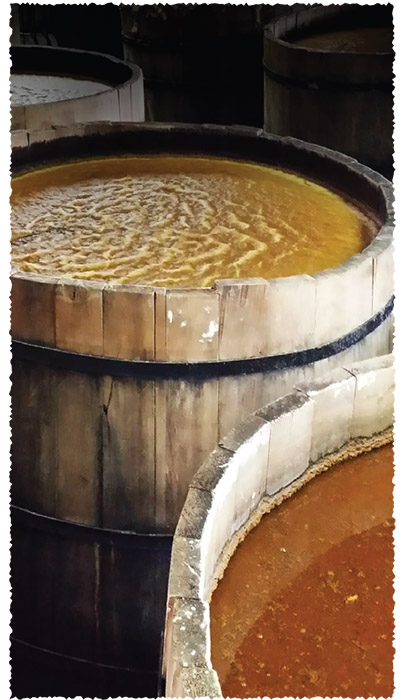Craft
15431
page-template,page-template-full_width,page-template-full_width-php,page,page-id-15431,amdhas-logic-0.0.1,bridge-core-2.6.5,qode-quick-links-1.0,qode-page-transition-enabled,ajax_fade,page_not_loaded,,paspartu_enabled,paspartu_on_bottom_fixed,footer_responsive_adv,qode-theme-ver-25.0,qode-theme-bridge,disabled_footer_bottom,wpb-js-composer js-comp-ver-6.5.0,vc_responsive


To see where Villa Lobos Tequila is distilled, is to go back over a century to one of the last distilleries of its kind in Mexico where production is still done by hand in the old fashioned way, slowly and with ‘corazón’ (heart).
Unusually, the agave used for Villa Lobos is entirely harvested at the Camarena Family plantations in Los Altos, the celebrated Arandas highlands. This ensures that only the very finest plants with the highest fructose levels are hand selected.
Unlike most distilleries using a chain saw for speed and ease of stacking, each agave is chopped in half by a skilled ‘axeman’ who examines its gender: if a male plant, the waxy cuticle near the root, which can impart bitter flavour and impair the quality, is additionally removed with the razor-sharp axe (Cogollo). Almost no one else does this! The halved agave piñas (hearts of the agave) are then slowly cooked in old traditional brick ovens for 36 hours (24 injecting hot steam + 12 hours without steam) and allowed another 24 hours to cool down (most distilleries now use rapid cooking stainless steel ‘autoclaves’ / pressure cookers) but this wouldn’t be good enough for Villa Lobos.
“It took 8 years to get the agave here , so what’s another few days?…”
After steaming in the ovens, the piñas are then crushed in the mill, partly to separate the agave juice from the fiber, and also to make it easier to ferment the natural sugars into alcohol (which is the point of fermentation). The resulting aromas and flavours of the ‘miel de agave’ (honey of the agave) are beyond description and indeed the essence of the final distillate…
Natural spring water from our own artesian well is then added to the juice and the mash of fibers and juice is sent into traditional large old pine fermentation tanks (wooden tanks have almost disappeared from distilleries nowadays, as they are so much harder to work with, however the end result justifies the extra efforts.)
Only the local natural yeasts blowing in on the wind through the glass-free open windows are used to ferment the juice, and slowly the bubbling of the juices starts as the yeasts convert the natural plant sugars into carbon-dioxide and alcohol. Fermentation lasts between 4 and 5 days.
The fermented juices are then slowly distilled twice. The double distillation process is performed first in a 3,500 liter stainless steel pot still and then in a 300 liter copper pot still. The result of the first distillation produces the run-off known as ‘ordinario’ and eliminates the fatty acids and oily compounds. The second fractional distillation produces the smoothest tequila we can make with the most delicate aromas and flavour. The high alcohols ‘CABEZAS’ (heads) and the unsuitable lower alcohols ‘COLAS’ (tails) are discarded, as we only want to keep and treasure the heart ‘CORAZÓN’.

Finally, in a completely unique way, we place the resulting tequila, the Blanco, in steel tanks for 6 months, or more, to allow it to rest and slowly oxidize, so its flavours and bouquet are enhanced.
This delay is expensive (normally a Blanco tequila is bottled immediately by most Tequileros), however Villa Lobos is not ‘most Tequilas’! The Blanco thus has an incredibly smooth finish with the famous spicy, white-pepper nose so beloved of the great Arandas tequila houses.
Dale describes the delicacy of the Blanco as so smooth that “it’s almost feminine” – which was his intention when he first took the idea to Carlos: it had to be different and it had to be special.

